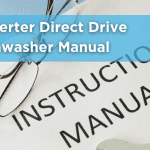Table of Contents
Why Should You Clean Your AC Drain Line?
Your air conditioning system’s drain line removes excess moisture from your home. Over time, dirt, dust, and algae can build up, leading to clogs that may cause water leaks, mold growth, and system inefficiency. Regularly cleaning the AC drain line with vinegar helps:
- Prevent clogs and water damage
- Reduce mold and bacteria growth
- Improve AC efficiency
- Extend the lifespan of your HVAC system
Signs Your AC Drain Line is Clogged
If your AC drain line is clogged, you may notice:
- Water pooling near your AC unit
- Musty or moldy odors coming from vents
- Increased humidity inside your home
- AC shutting off unexpectedly
If you notice these signs, it’s time to clean the drain line.
How to Clean AC Drain Line with Vinegar: Step-by-Step Guide
Step 1: Gather Your Supplies
You’ll need:
- White distilled vinegar
- Warm water
- Measuring cup
- Funnel or turkey baster
- Soft brush or pipe cleaner
- Bucket or towel (for potential spills)
Step 2: Turn Off the AC Unit
For safety, always turn off your HVAC system before cleaning the drain line.
- Locate the thermostat and switch off the AC.
- Turn off the power at the breaker box to avoid electrical hazards.
Step 3: Locate the AC Drain Line
Your AC drain line is usually a PVC pipe near the indoor air handler, often located in the attic, basement, or utility closet. Look for a small T-shaped vent or access cap.
Step 4: Flush the Drain Line with Vinegar
- Remove the drain cap from the pipe.
- Pour one cup of white vinegar into the drain line using a funnel or turkey baster.
- Let the vinegar sit for 30 minutes to break down algae and bacteria.
Tip: You can also mix vinegar with warm water for extra effectiveness.
Step 5: Flush with Warm Water
After 30 minutes, pour warm water into the drain line to flush out debris. If the water drains freely, the clog has been removed.
If the line remains clogged, use a soft brush or pipe cleaner to dislodge stubborn buildup.
Step 6: Check the Drain Line for Proper Flow
Go outside and locate the AC drain pipe outlet (usually near your outdoor unit). If water is flowing freely, your drain line is clear. If not, repeat the process or use a wet/dry vacuum to suck out debris.
How to Prevent AC Drain Line Clogs
To keep your AC drain line clean:
- Flush with vinegar every 1-2 months to prevent buildup.
- Change AC filters regularly to reduce dust and debris.
- Keep the drain pan clean and free of standing water.
- Ensure proper slope of the drain line for good drainage.
When to Call a Professional
If your AC drain line remains clogged despite cleaning, it may indicate a more serious issue. Call an HVAC technician if:
- Water continues to back up into your home
- The AC shuts off frequently due to drainage issues
- There is visible mold or heavy algae buildup
Final Thoughts
Cleaning your AC drain line with vinegar is a simple and effective way to prevent clogs, improve efficiency, and extend the lifespan of your air conditioning system. By following these easy steps and maintaining a regular cleaning routine, you can keep your AC running smoothly all year round!
Frequently Asked Questions (FAQs)
1. How often should I clean my AC drain line with vinegar?
Clean your drain line every 1-2 months to prevent clogs and buildup.
2. Can I use bleach instead of vinegar?
Vinegar is safer because bleach can damage PVC pipes and create toxic fumes.
3. What if my AC drain line is completely clogged?
Try using a wet/dry vacuum to suck out the clog, or call an HVAC technician for professional help.
4. Why does my AC drain line keep clogging?
Common causes include algae growth, dust, and improper maintenance. Regular cleaning helps prevent recurring clogs.
5. Is cleaning my AC drain line necessary if my system is working fine?
Yes! Regular cleaning prevents future problems and keeps your AC running efficiently.
By following these steps, you can easily clean and maintain your AC drain line, ensuring a cool and comfortable home!




